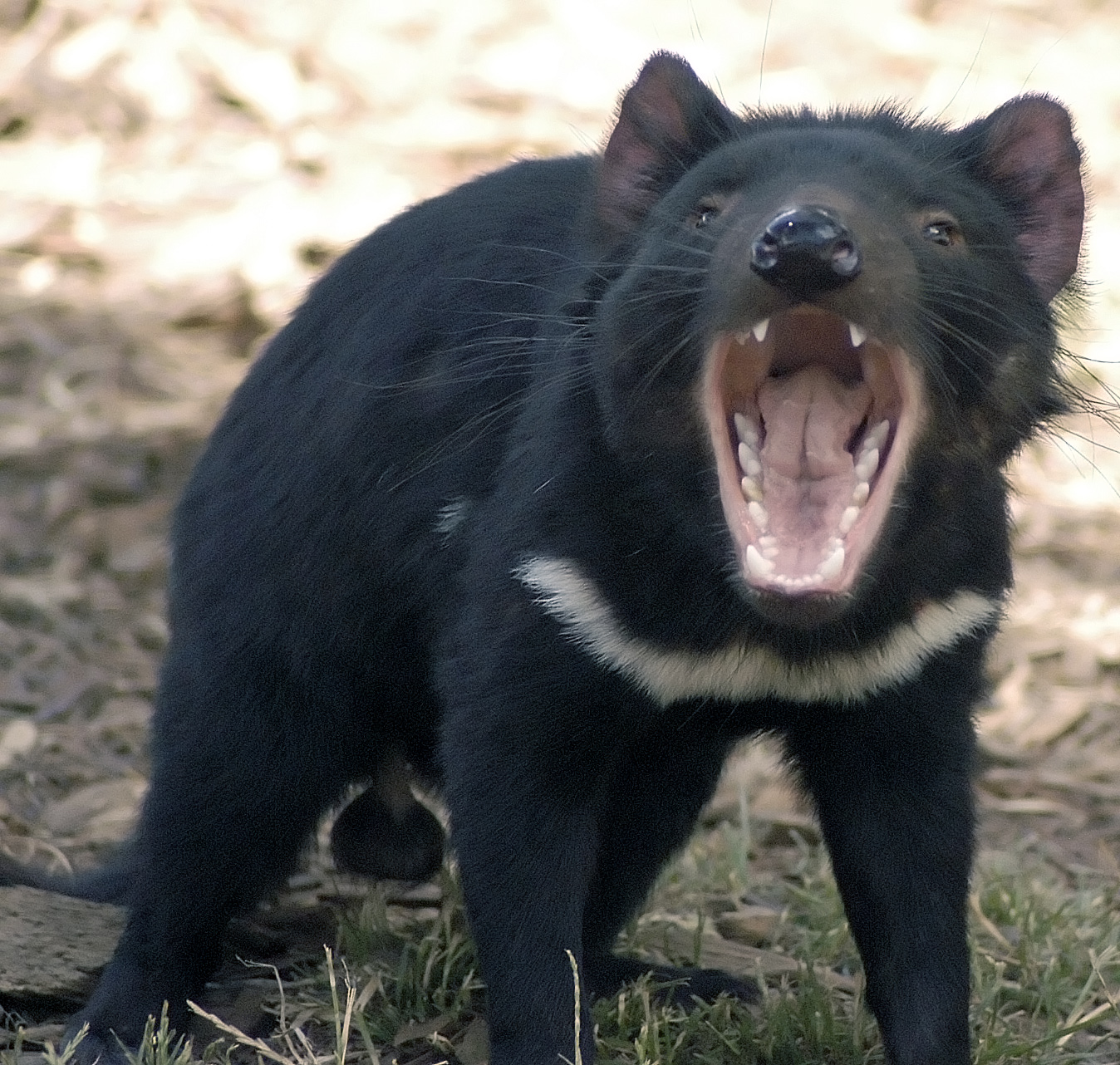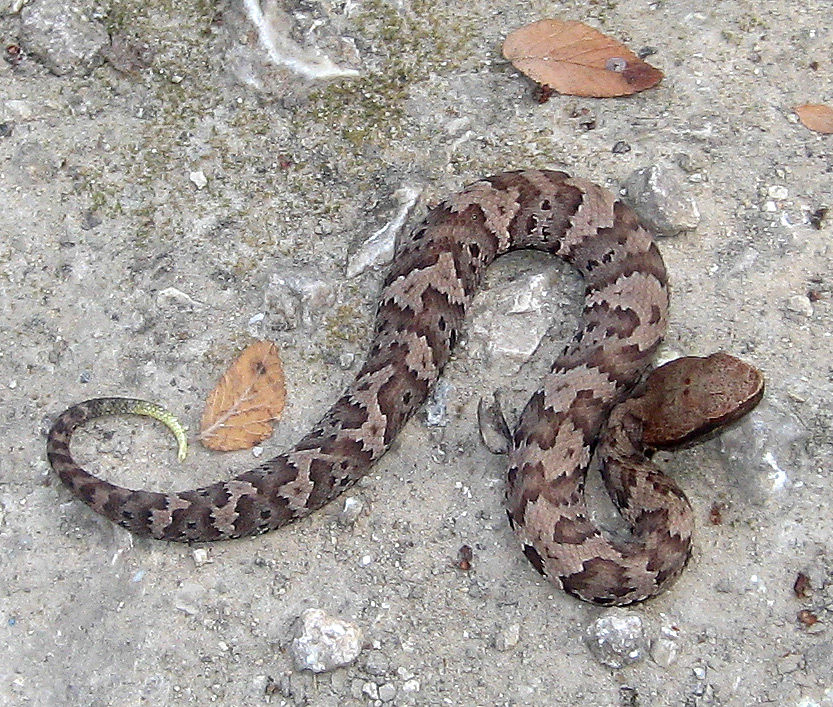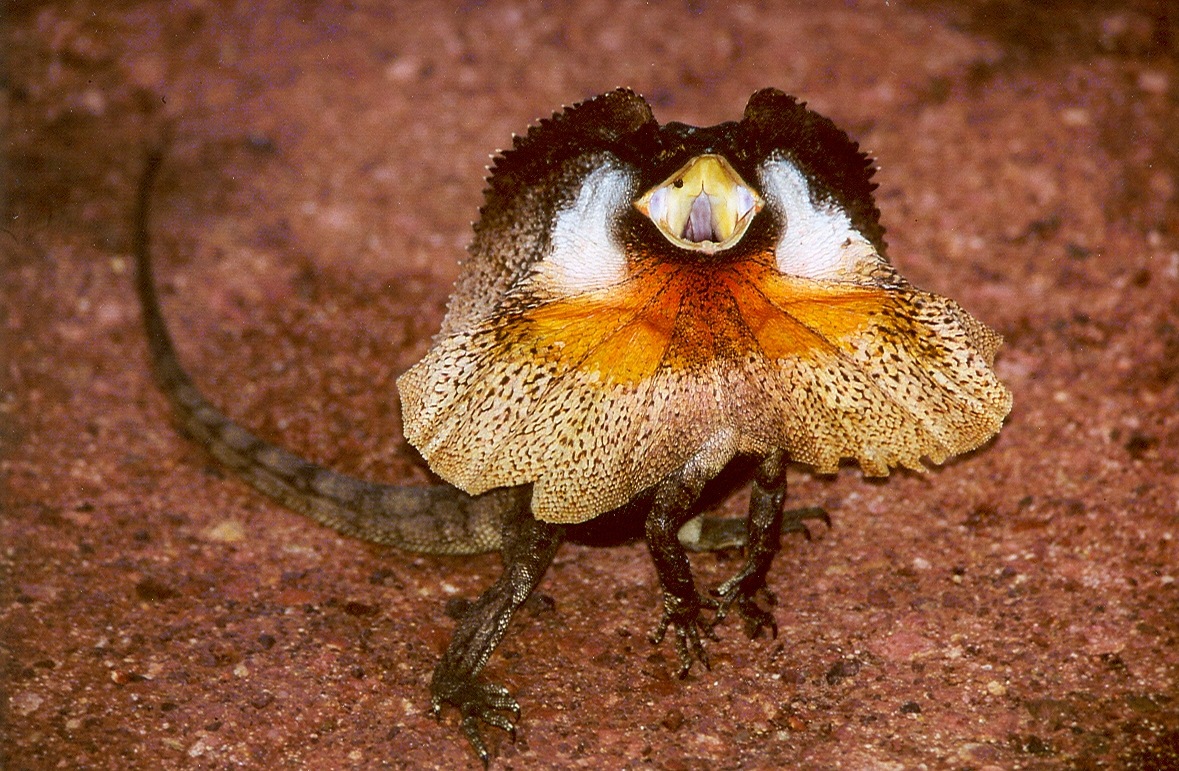|
Gaping (animal Behavior)
Gaping is a common form of behavior in the animal kingdom, in which an animal opens its mouth widely and displays the interior of its mouth, for any of various purposes.Stephen J. Divers, Douglas R. Mader, ''Reptile Medicine and Surgery'' (2005), p. 168. This may be a form of deimatic behaviour, colloquially known as a startle display or threat display, as it enlarges the appearance of the animal, and for those with teeth it shows the threat that these represent. Animals may also use gaping as part of a courtship display, or to otherwise communicate with each other. Some animals have evolved features which make gaping behavior more visually effective. For example, " many species of reptile, the oral mucosa may be a bright color that serves to distract the predator". Gaping is part of the shark agonistic display, and is also found in snakes such as the cottonmouth, and in birds ranging from seagulls to puffins to roosters. A number of species of bird use a gaping, open beak in thei ... [...More Info...] [...Related Items...] OR: [Wikipedia] [Google] [Baidu] |
Mouth
In animal anatomy, the mouth, also known as the oral cavity, or in Latin cavum oris, is the opening through which many animals take in food and issue vocal sounds. It is also the cavity lying at the upper end of the alimentary canal, bounded on the outside by the lips and inside by the pharynx. In tetrapods, it contains the tongue and, except for some like birds, teeth. This cavity is also known as the buccal cavity, from the Latin ''bucca'' ("cheek"). Some animal phyla, including arthropods, molluscs and chordates, have a complete digestive system, with a mouth at one end and an anus at the other. Which end forms first in ontogeny is a criterion used to classify bilaterian animals into protostomes and deuterostomes. Development In the first multicellular animals, there was probably no mouth or gut and food particles were engulfed by the cells on the exterior surface by a process known as endocytosis. The particles became enclosed in vacuoles into which enzymes were secr ... [...More Info...] [...Related Items...] OR: [Wikipedia] [Google] [Baidu] |
Deimatic Behaviour
Deimatic behaviour or startle display means any pattern of bluffing behaviour in an animal that lacks strong defences, such as suddenly displaying conspicuous eyespots, to scare off or momentarily distract a predator, thus giving the prey animal an opportunity to escape. The term deimatic or dymantic originates from the Greek δειματόω (deimatóo), meaning "to frighten". Deimatic display occurs in widely separated groups of animals, including moths, butterflies, mantises and phasmids among the insects. In the cephalopods, different species of octopuses, squids, cuttlefish and the paper nautilus are deimatic. Displays are classified as deimatic or aposematic by the responses of the animals that see them. Where predators are initially startled but learn to eat the displaying prey, the display is classed as deimatic, and the prey is bluffing; where they continue to avoid the prey after tasting it, the display is taken as aposematic, meaning the prey is genuinely distastef ... [...More Info...] [...Related Items...] OR: [Wikipedia] [Google] [Baidu] |
Shark Agonistic Display
Agonism is a broad term which encompasses many behaviours that result from, or are triggered by biological conflict between competing organisms. Approximately 23 shark species are capable of producing such displays when threatened by intraspecific or interspecific competitors, as an evolutionary strategy to avoid unnecessary combat. The behavioural, postural, social and kinetic elements which comprise this complex, ritualized display can be easily distinguished from normal, or non-display behaviour, considered typical of that species' life history. The display itself confers pertinent information to the foe regarding the displayer's physical fitness, body size, inborn biological weaponry, confidence and determination to fight. This behaviour is advantageous because it is much less biologically taxing for an individual to display its intention to fight than the injuries it would sustain during conflict, which is why agonistic displays have been reinforced through evolutionary time, ... [...More Info...] [...Related Items...] OR: [Wikipedia] [Google] [Baidu] |
Cottonmouth
''Agkistrodon piscivorus'' is a species of pit viper in the subfamily Crotalinae of the family Viperidae. It is one of the world's few semiaquatic vipers (along with the Florida cottonmouth), and is native to the southeastern United States. As an adult, it is large and capable of delivering a painful and potentially fatal bite. When threatened, it may respond by coiling its body and displaying its fangs. Individuals may bite when feeling threatened or being handled in any way. It tends to be found in or near water, particularly in slow-moving and shallow lakes, streams, and marshes. It is a capable swimmer and, like several species of snakes, is known to occasionally enter bays and estuaries and swim between barrier islands and the mainland. Gloyd HK, Conant R (1990). ''Snakes of the ''Agkistrodon'' Complex: A Monographic Review''. Society for the Study of Amphibians and Reptiles. 614 pp. 52 plates. LCCN 89-50342. . The generic name is derived from the Greek words ''ankistron' ... [...More Info...] [...Related Items...] OR: [Wikipedia] [Google] [Baidu] |
Digastric Muscle
The digastric muscle (also digastricus) (named ''digastric'' as it has two 'bellies') is a small muscle located under the jaw. The term "digastric muscle" refers to this specific muscle. However, other muscles that have two separate muscle bellies include the suspensory muscle of duodenum, omohyoid, occipitofrontalis. It lies below the body of the mandible, and extends, in a curved form, from the mastoid notch to the mandibular symphysis. It belongs to the suprahyoid muscles group. A broad aponeurotic layer is given off from the tendon of the digastric muscle on either side, to be attached to the body and greater cornu of the hyoid bone; this is termed the suprahyoid aponeurosis. Structure The digastricus (digastric muscle) consists of two muscular bellies united by an intermediate rounded tendon. The two bellies of the digastric muscle have different embryological origins, and are supplied by different cranial nerves. Each person has a right and left digastric muscle. ... [...More Info...] [...Related Items...] OR: [Wikipedia] [Google] [Baidu] |
Puffin
Puffins are any of three species of small alcids (auks) in the bird genus ''Fratercula''. These are pelagic seabirds that feed primarily by diving in the water. They breed in large colonies on coastal cliffs or offshore islands, nesting in crevices among rocks or in burrows in the soil. Two species, the tufted puffin and horned puffin, are found in the North Pacific Ocean, while the Atlantic puffin is found in the North Atlantic Ocean. All puffin species have predominantly black or black and white plumage, a stocky build, and large beaks that get brightly colored during the breeding season. They shed the colorful outer parts of their bills after the breeding season, leaving a smaller and duller beak. Their short wings are adapted for swimming with a flying technique underwater. In the air, they beat their wings rapidly (up to 400 times per minute) in swift flight, often flying low over the ocean's surface. Etymology The English name "puffin" – puffed in the sense of swollen ... [...More Info...] [...Related Items...] OR: [Wikipedia] [Google] [Baidu] |
Western Massasauga
''Sistrurus tergeminus'', also known as the western massasauga, is a rattlesnake found in the southwestern plains of the United States and northern Mexico. Like all rattlesnakes, it is a pit viper and is venomous. Taxonomy It was once considered a subspecies of the eastern massasauga (''Sistrurus catenatus''). It contains two subspecies: the nominate ''S. t. tergeminus,'' or plains massasauga'','' found in the Great Plains, and '' S. t. edwardsii'', or desert massasauga, found in the deserts of the Southwestern United States and northern Mexico. The latter is considered ''"Vulnerable"'' by NatureServe. According to Campbell and Lamar (2004), a population also exists in southeastern Colorado that is morphologically somewhat intermediate between ''S. t. tergeminus'' and ''S. t. edwardsii''.Campbell JA, Lamar WW. (2004). ''The Venomous Reptiles of the Western Hemisphere''. Comstock Publishing Associates, Ithaca and London. 870 pp. 1500 plates. . Description Adults range in size f ... [...More Info...] [...Related Items...] OR: [Wikipedia] [Google] [Baidu] |
Threat Display
Deimatic behaviour or startle display means any pattern of bluffing behaviour in an animal that lacks strong defences, such as suddenly displaying conspicuous eyespots, to scare off or momentarily distract a predator, thus giving the prey animal an opportunity to escape. The term deimatic or dymantic originates from the Greek δειματόω (deimatóo), meaning "to frighten". Deimatic display occurs in widely separated groups of animals, including moths, butterflies, mantises and phasmids among the insects. In the cephalopods, different species of octopuses, squids, cuttlefish and the paper nautilus are deimatic. Displays are classified as deimatic or aposematic by the responses of the animals that see them. Where predators are initially startled but learn to eat the displaying prey, the display is classed as deimatic, and the prey is bluffing; where they continue to avoid the prey after tasting it, the display is taken as aposematic, meaning the prey is genuinely distastef ... [...More Info...] [...Related Items...] OR: [Wikipedia] [Google] [Baidu] |
Chlamydosaurus Kingii
The frilled lizard (''Chlamydosaurus kingii''), also known as the frill-necked lizard or frilled dragon, is a species of lizard in the family Agamidae. It is native to northern Australia and southern New Guinea. This species is the only member of the genus ''Chlamydosaurus''. Its common names come from the large frill around its neck, which usually stays folded against the lizard's body. It reaches from head to tail and can weigh . Males are larger and more robust than females. The frilled lizard is largely arboreal, spending most of its time in the trees. Its diet consists mainly of insects and other invertebrates. It is more active during the wet season, which is when it breeds and spends more time near or on the ground. It is less observed during the dry season, during which it seeks shade in the branches of the upper canopy. The lizard uses its frill to scare off predators and display to other individuals. The species' distinctive appearance has been used in films and TV. ... [...More Info...] [...Related Items...] OR: [Wikipedia] [Google] [Baidu] |
Gull
Gulls, or colloquially seagulls, are seabirds of the family Laridae in the suborder Lari. They are most closely related to the terns and skimmers and only distantly related to auks, and even more distantly to waders. Until the 21st century, most gulls were placed in the genus ''Larus'', but that arrangement is now considered polyphyletic, leading to the resurrection of several genera. An older name for gulls is mews, which is cognate with German ''Möwe'', Danish ''måge'', Swedish ''mås'', Dutch ''meeuw'', Norwegian ''måke''/''måse'' and French ''mouette'', and can still be found in certain regional dialects. Gulls are typically medium to large in size, usually grey or white, often with black markings on the head or wings. They typically have harsh wailing or squawking calls; stout, longish bills; and webbed feet. Most gulls are ground-nesting carnivores which take live food or scavenge opportunistically, particularly the ''Larus'' species. Live food often includes crustac ... [...More Info...] [...Related Items...] OR: [Wikipedia] [Google] [Baidu] |
Ethology
Ethology is the scientific study of animal behaviour, usually with a focus on behaviour under natural conditions, and viewing behaviour as an evolutionarily adaptive trait. Behaviourism as a term also describes the scientific and objective study of animal behaviour, usually referring to measured responses to stimuli or to trained behavioural responses in a laboratory context, without a particular emphasis on evolutionary adaptivity. Throughout history, different naturalists have studied aspects of animal behaviour. Ethology has its scientific roots in the work of Charles Darwin and of American and German ornithologists of the late 19th and early 20th century, including Charles O. Whitman, Oskar Heinroth, and Wallace Craig. The modern discipline of ethology is generally considered to have begun during the 1930s with the work of Dutch biologist Nikolaas Tinbergen and Austrian biologists Konrad Lorenz and Karl von Frisch, the three recipients of the 1973 Nobel Prize in Phys ... [...More Info...] [...Related Items...] OR: [Wikipedia] [Google] [Baidu] |






